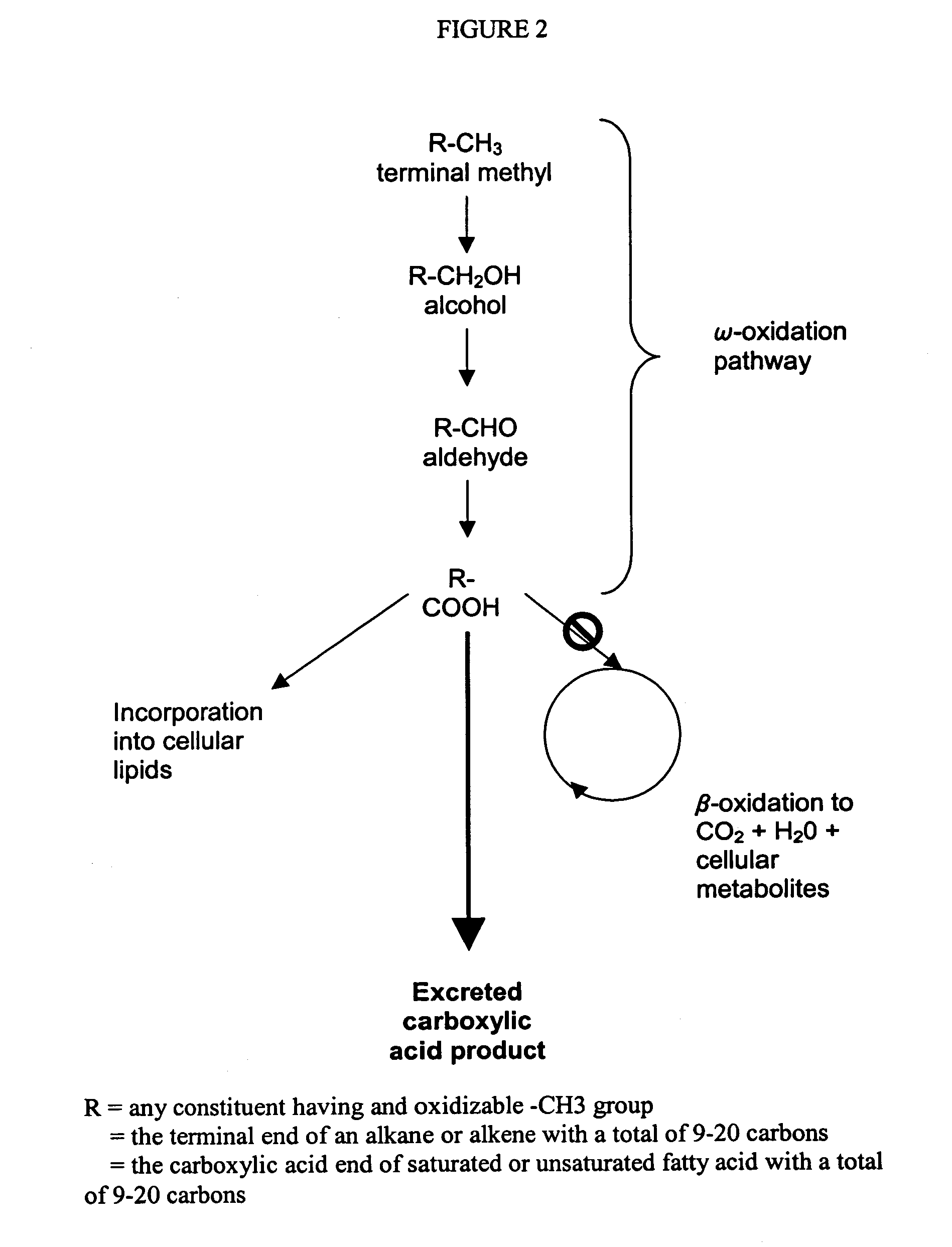Method for controlling biooxidation reactions
a biooxidation reaction and biochemical technology, applied in the field of biooxidation reaction control, can solve the problems of high irreversible reaction that cannot be controlled, can not achieve the desired transformation, damage or degrade the biocatalyst, and react non-selectively with the substrate, etc., to achieve the effect of maintaining biooxidation activity, ensuring accuracy, and being easy to implemen
- Summary
- Abstract
- Description
- Claims
- Application Information
AI Technical Summary
Benefits of technology
Problems solved by technology
Method used
Image
Examples
example 1
Component Gas Balance Calculations with Optional Oxygen Supplementation
[0081]It is the objective in this example to provide the expressions for rCO2·Vf and −rO2·Vf in terms of readily measured fermentation parameters for use in the control strategies of this invention. The mathematical formulas executed in determining rate of carbon dioxide evolution and rate of oxygen uptake for use in the methods of this invention are presently derived from gas phase component balances. A simplified flow diagram of the biooxidation reactor gas flow system for use in defining the component gas balance calculations is shown in FIG. 1 where a gas containing oxygen, usually air, is sparged into the reaction mixture. Optionally, a supplementary supply of oxygen may be blended with the air to enrich its oxygen content or sparged directly into the biooxidation reactor. The component gas balance equations are valid and algebraically the same irrespective of the feed location chosen for either the air or t...
example 2
Component Gas Balances Measurement Devices
[0093]Gas flow measurements may be made using any of a number of gas flow devices that generate a calibrated analog or digital signal representing the gas flow rate. These include thermal mass flow meters, orifice plate meters, and coriolus effect meters. These instruments typically express gas flow rates in standard volumetric units, that is the volumetric rate at some standard temperature and pressure. These are the standard T° and P° to be used in the method of Example 1. The instrument vendor can also supply the value for K if the gas flow instrument is used with a gas other than the calibration gas.
[0094]A variety of instruments can be used for the gas composition analysis in the method of Example 1. In that a common air supply might serve multiple biooxidation reactors, it is most useful to sample the compressor air supply and the biooxidations in a repeating sequence to a common instrument. Mass spectrometers are preferred measurement...
example 3
Operating and Stoichiometric Parameters for Combustion of Pure Co-Substrates
[0095]This example relates to the determination of the stoichiometric coefficients of Reaction 2 for the combustion of pure co-substrate feeds (Xc=1). These coefficients are then used directly in the monitoring and control formulas of this invention.
[0096]Reaction 2 represents the net of a series of biochemical reactions by which energy is generated from co-substrate by the biocatalyst. It is not necessary that the pathway be known in determining the proper stoichiometric coefficients of Reaction 2, for the stoichiometry is the same for the complete combustion of the same co-substrate in the presence of oxygen to carbon dioxide and water. That is, for a co-substrate of chemical formula CxHyOz, then the combustion stoichiometry is given as
[0097]
[0098]By inspection with Reaction 2 of the specification, then
c2=1 Equation 3.1
b2=(x+½y−½z) Equation 3.2
e2=x Equation 3.3
f2=½y Equation 3.4
[0099]It is also cle...
PUM
| Property | Measurement | Unit |
|---|---|---|
| volume | aaaaa | aaaaa |
| concentration | aaaaa | aaaaa |
| weight | aaaaa | aaaaa |
Abstract
Description
Claims
Application Information
 Login to View More
Login to View More - R&D
- Intellectual Property
- Life Sciences
- Materials
- Tech Scout
- Unparalleled Data Quality
- Higher Quality Content
- 60% Fewer Hallucinations
Browse by: Latest US Patents, China's latest patents, Technical Efficacy Thesaurus, Application Domain, Technology Topic, Popular Technical Reports.
© 2025 PatSnap. All rights reserved.Legal|Privacy policy|Modern Slavery Act Transparency Statement|Sitemap|About US| Contact US: help@patsnap.com



